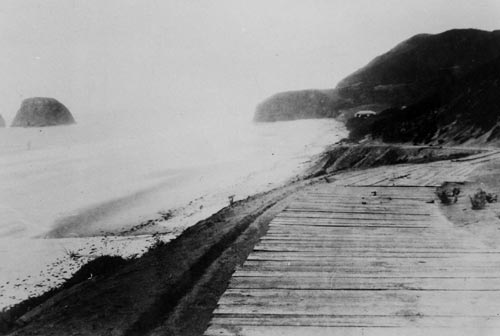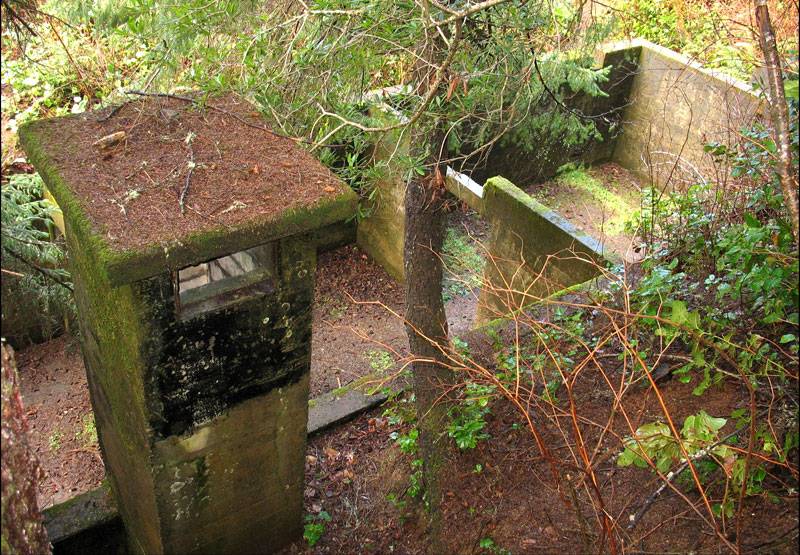Aftermath of December 7 Shifted Life on Oregon Coast: World War II Patrols, Blackouts
Published 12/08/23 a 4:55 a.m.
By Oregon Coast Beach Connection staff

(Oregon Coast) – Just as it was around the rest of the nation, December 7, 1942was a day met with horror around the Oregon coast. Edging closer to 100 years now, there aren't many left that remember that day or even what life was like along these shores after that pivotal moment.
Includes exclusive listings; some specials in winter
In Cannon Beach:
Includes rentals not listed anywhere else
In Manzanita, Wheeler, Rockaway Beach:
Some specials for winter
In Pacific City, Oceanside:
Some specials for winter
In Lincoln City:
Some specials for winter
In Depoe Bay, Gleneden Beach:
Some specials for winter
In Newport:
Look for some specials
In Waldport
Some specials for winter
In Yachats, Florence
Some specials for winter
Southern Oregon Coast Hotels / Lodgings
Reedsport to Brookings, places to stay; winter deals
It was, if you'll excuse the pun, a sea change – and an even bigger worry than many parts of the United States as this could've been the frontline to any invasion attempt from Japan.
December 7 immediately entered us into World War II, and this killed off most of the tourism business along the Oregon coast – one that was just beginning to pick up speed. Hotel rooms were empty as were other homes that were rented out (the precursor to the vacation rental biz), though most were still used as private homes or second homes.
Items necessary for travel – like tires – became rationed, so traffic to the coast from the valley bottomed out. Yet many hotels, cabins and homes were rented out by the army, housing men who kept guard on these shores.

Oceanside
That saved numerous hoteliers.
There were plenty of men walking the shoreline – often the beaches. High vantage points often had little lookout towers built: utilitarian, cone-shaped buildings that sort of resembled small lighthouses. Two-man shifts kept an eye on the shores and oceans from there.
None of these are found on the coast anywhere, but the one major lookout still around is the stone shelter on Cape Perpetua. That was originally built in the '30s, however, for the purpose of enjoying the view.
Coastal states in the U.S. had to deal with blacking out windows and keeping lights off in case of invasion. Patrol boats roamed up and down the Pacific, including at nighttime. It was then that some army guards noticed not everyone was blacking out their lights.

Home in Lincoln City that was a submarine lookout during World War II
One general stationed on the central coast wrote an op-ed in the local newspaper threatening marshal law if locals didn't adhere to this rule more.
Radar stations popped all along the coastline, including three rather famous ones left at Tillamook Head, Coos Bay and near Cape Meares. There were dozens on the coast, including one near the cemetery at Yachats.
See Radar Bunker at Coos Bay's Cape Arago: Living S. Oregon Coast History -- and --- The Mysterious World War II Bunker Atop Oregon Coast's Tillamook Head

Bunker near Coos Bay
Blimps took to the skies in fairly big numbers, roaming up and down the coastline. Numerous pics of that sight remain, but few army installations or lookouts were ever photographed because all of this was still secret at the time.
Many soldiers kept watch on the beaches of the coastline, marching up and down no matter the weather. These dudes were from outfits like the Coast Guard Beach Patrol or the special branch that was created by the Navy that actually started marching here in 1941. They got the name “Sand Pounders,” and oft-times included guard dogs. It's well documented that many of the Sand Pounders were bitten by their own dogs – these trained pups were that formidable.

War patrols in Lincoln City - courtesy North Lincoln Historical Museum
That happened enough that the military grew a little concerned about the mens' well-being and allowed them to keep better-natured dogs as their own.
Seaside During Wartime: N. Oregon Coast WWII History
In many areas, locals formed their own civilian guards as well. Cannon Beach was one, which had a group of citizen soldiers known as the “The Guerrillas” right after Pearl Harbor, with guards placing themselves by the Arch Cape Tunnel.
On the south Oregon coast, along the big dunes area, bombers ran exercises.
Tourists were banned from many local beaches if they were being patrolled, often for fear that someone would take a vacation photo of whatever system they had. In fact, guards were instructed to confiscate cameras if they were brought on or near those beaches.
Bonfires at night were banned as well, to help ensure any enemy aircraft could not see well below.
1943: aircraft crashed into the headland near Oceanside
Guard stations were often set about three-fourths of a mile apart from each other, and during each six-hour shift each guard had to phone in their reports.
These men were well trained in being able being able to spot anything at sea or in the air. Consequently, nothing was allowed to approach the shoreline within three miles in most places.
There were two U.S. ships torpedoed by the enemy off the southern Oregon coast.
By at least '44 if not earlier, it became apparent no one was going to invade the U.S., and all these men occupying guard stations and hotels slowly piled out, ordered to other places. As beach restrictions eased up, travel to the coast picked up at least a little, though not as much as just after the war.
This was when the big change happened where visitors did not use cabins or tents anymore as they had in the previous 50 or so years of coastal tourism. Now, it was hotels and motor lodges that ruled the landscape, with the idea of motor lodges becoming “motels” fairly quickly in the '50s.
Oregon Coast Hotels in this area - South Coast Hotels - Where to eat - Maps - Virtual Tours
Cannon Beach Lodging
Nehalem Bay Lodgings
Manzanita Hotels, Lodging
Three Capes Lodging
Pacific City Hotels, Lodging
Lincoln City Lodging
Depoe Bay Lodging
Newport Lodging
Waldport Lodging
Yachats Lodging
Oregon Coast Vacation Rentals
Oregon Coast Lodging Specials
More About Oregon Coast hotels, lodging.....
More About Oregon Coast Restaurants, Dining.....
 Andre' GW Hagestedt is editor, owner and primary photographer / videographer of Oregon Coast Beach Connection, an online publication that sees over 1 million pageviews per month. He is also author of several books about the coast.
Andre' GW Hagestedt is editor, owner and primary photographer / videographer of Oregon Coast Beach Connection, an online publication that sees over 1 million pageviews per month. He is also author of several books about the coast.
LATEST Related Oregon Coast Articles
All five were rescued and are okay
Lewis Moon Snail and Its Freaky Egg Casings Found on Oregon, Washington Coasts
Lewis Moon Snail and Its Freaky Egg Casings Found on Oregon, Washington Coasts
Central Oregon Coast Spring Break 2025: Unpopulated Gems to Insect-Eating Plants
Wilds of Lincoln City, Depoe Bay; hungry plants, Newport, Waldport, Florence
Spring Break 2025 on S. Oregon Coast: Nothing to do But Everything
It's one deserted beach after another from Reedsport to Brookings. S. Coast events
Central Oregon Coast's Beach, Bike 'n Blues Fest Resets Date to Sept 13
The day of Waldport events has moved again
Florence Rhododendron Fest Offers Further Preview: Adds Oregon Coast Radio Host
Grand Marshal picked, Rhody Fest runs May 15 - 18. Florence events
Minor Road Work on Two Oregon Coast Towns This Week: Astoria, Lincoln City
Some traffic issues to look out for in Astoria and Lincoln City near or during spring break
Hatfield Science Day Returns April 12 With Unique Tours, Including Oregon Coa...
Climb aboard a ship, take special tours, touch sea creatures in Newport. Newport events
Back to Oregon Coast
Contact Advertise on Oregon Coast Beach Connection
All Content, unless otherwise attributed, copyright Oregon Coast Beach Connection. Unauthorized use or publication is not permitted
Keywords: Oregon coast history, World War II, Gold Beach, Port Orford, Bandon, Coos Bay, Charleston, Reedsport, Florence, Yachats, Waldport, Newport, Depoe Bay, Lincoln City, Pacific City, Oceanside, Tillamook, Garibaldi, Rockaway Beach, Nehalem, Manzanita, Cannon Beach, Seaside, Astoria



















































